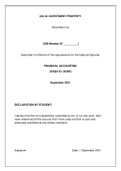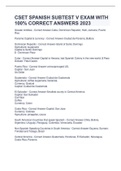Thesis
ICB RTAP Investment Property IAS 40
- Course
- FINANCIAL ACCOUNTING
- Institution
- FINANCIAL ACCOUNTING
This is my dissertation that was submitted as my final step to obtaining my ICB Financial Accounting qualification. A lot of hard work went into it which paid off!!! The document is the full dissertation including full Harvard Style referencing
[Show more]





